The Fundamentals of How to Scramble Eggs
Learning how to scramble eggs is a staple of cooking. They're easy to forget about, though! Scrambled eggs are so standard a food, that it can be easy for them to get overshadowed by other things.
I would almost never order scrambled eggs at a restaurant. I tend not to want to overpay for things that I can make at home! And opt instead for things that I can't or often don't want to have to make. If I'm going to go to breakfast or brunch, I'm probably ordering caramelized banana French toast with white chocolate crème anglaise and candied walnuts from Petite Provence in Portland.
Scrambled eggs are perfect for anything from breakfast, to top off salads, mix into curries, or cook just because.
Scrambled Eggs in the Spotlight
We don't often see scrambled eggs in recipe books, scrolling across social media, or in cooking competitions. I've been wracking my brain trying to figure out when I've seen scrambled eggs spotlighted at all.
Does Julia Child have a scrambled egg recipe? Surely in Mastering the Art of French Cooking or on one of her cooking episodes there is something on scrambling eggs!! I did have to look this up, but it is in fact a thing. On page 125 we have Oeufs Brouillés. In the French style, this is more of an egg custard with milk and butter or whipping cream.
There is also an entire episode dedicated to breakfast on MasterChef where Graham Elliot cooked a soft scramble with smoked salmon in season 6, episode 7. In true MasterChef fashion, he also made a full English breakfast and stuffed French toast with banana and hazelnut chocolate at the same time alongside the competitors. Who were only tasked to make only one dish. And not a single one of them made scrambled eggs.
One of my favorite instances of how to scramble eggs on TV, though, is when Gordon Ramsay was on Hot Ones. In season 8, episode 1O after enduring (well, crying) through 10 increasingly hotter hot wings, Sean Evans surprised him at the end with the challenge of teaching him how to actually make scrambled eggs. They rolled out an entire kitchen and Gordon Ramsey (through tears) berated Sean Evans on his whisking skills.
Learning How to Scramble Eggs
For the life of me I can't remember ever actually learning how to scramble eggs. Surely someone at some point must have taught me? Or I watched someone make them? Maybe even on TV? Was there a pseudo-egg-making tutorial on a sitcom once?
But for the life of me I can't remember learning how to scramble eggs at all!
I remember in my early twenties talking about wishing that I knew how to cook more. Some poor chap took me seriously and tried to show me how to scramble eggs. I didn't have the heart to tell him that wanting to cook with more finesse didn't need to start so rudimentary! I could, in fact, scramble an egg.
Nevertheless, I feel like eggs are a staple. Like we all grew up some innate knowledge or early induction into the process and should all just know how to scramble eggs by the time that we reach adulthood.
However, much like doing laundry and filing taxes, scrambling eggs is a learned skill. And there are definitely some wrong ways to go about it!
Do You Need Water, Milk, or Cream?
A lot of recipes will call for diluting the eggs. This appears to come from the European standard where heavy cream or crème fraîche are pretty much required to scramble eggs.
I grew up thinking this, too. You always add milk to eggs! I don't specifically remember ever being told this. I don't even remember learning how to make eggs. But, as far back as I can recall, I've always added milk or water to my eggs.
I added milk or water to eggs for at least 2 decades before I ever thought to question it!
I don't do this any more, though. And I know that this is going to be a controversial take... But hear me out!
Adding Liquid Dilutes the Eggs
Adding anything to your eggs is unnecessary. Eggs have a subtly rich and creamy flavor on their own. Adding anything to them, like water or milk, just dilutes any natural flavor to the eggs and leaves them bland and flavorless. For me, this kind of defeats the purpose of eating scrambled eggs!
We all know what bad scrambled eggs taste like.
Cafeteria eggs as a kid in school or college that have been sitting under a heat lamp for far too long. They somehow manage to both be too runny and ooze on the bottom while being dried out and almost crusty on the top.
Cheap continental breakfast eggs at hotels (that don't make up for the additional breakfast change) and are as bland and flavorless as thee unbuttered toast and bagels they have next to them.
The eggs that your kids or significant other make when they're trying to pamper you on your Birthday and you give them more credit for trying than succeeding and then you all laugh about it and go out for brunch. (I actually don't know what that's like, but you see it in movies, and we all can imagine!)
Adding Liquid DOESN'T Make Eggs Fluffier
If there isn't a superior taste, why do we keep diluting eggs like this? Why is watered down eggs supposed to be superior?
I suspect that we're all laboring under the false assumption that adding liquid made the eggs fluffier.
This is at least what I always used to think! You're supposed to add milk to whisk the eggs. If you don't have milk or want a little bit more of a diet form of scrambled eggs, at the very least toss in some water because you need to add liquid to make the eggs fluffier.
This is a fallacy, though. Milk and water are far denser than we imagine them being.
If you're making bread, adding too much liquid will prevent the dough from rising. A dough that is too wet will be weighted down and spread out like a pancake.
The same concept applies to making eggs. Adding liquid is great for runny eggs and there's an argument that can be made for omelettes.
But a nice, light and fluffy scrambled egg?
Stop adding liquid to your eggs! They're already a liquid!!
Let's Talk About the French-style Scrambled Eggs
There is something to be said for the creamy egg custard-style eggs. These are rich and decadent and runny. And you might be thinking that that is everything that you want in a scrambled egg. But I feel like we're not talking about the same thing here.
I like a quick cooked, somewhat firmer egg. It's simple and should cook in a matter of a few quick minutes.
The French-style scrambled eggs is an entirely different way of preparing an egg. It isn't splash some water or milk into the eggs and fry on a skillet. It's a slower-cooked custard that requires its own set of skills and instructions.
This is not what most of us are doing when we go to scramble eggs! And the same rules do not apply!
I would argue that French or broader European-style eggs are as close to scrambled eggs as omelettes are. They may still be eggs and they may still be in the breakfast family. But they are in a category of their own and cannot be confused with being the same thing.
How to Season and Flavor Eggs
Eggs are very rarely eaten as is. At the very least, we all add just a pinch of salt and pepper, if not dill, chives, garlic, scallions, parsley, peppers, truffles, cheese, or any number of add-ins. What you season and flavor eggs with is almost as much of a staple and pivotal to the egg making process as the eggs themselves are! But we need to halt for a moment.
Step Away from the Salt Shaker!
I cannot emphasize this enough: STEP AWAY FROM THE SEASONINGS IN GENERAL!!
A trick to scrambling eggs is not adding spice or flavor ahead of time.
Pre-salting eggs will break down the proteins and make them watery. There are plenty of tried and true chefs, folk wisdom that has been passed down for generations, and home cooks who have experimented with this. And the conclusion is that you will end up with a runnier egg. If you prefer a softer egg? I guess salt away.
I've found that a lot of people when cooking at home, though, look for firmness as an indicator of doneness. This means that salting the eggs prematurely can lead to overcooking. And I'd rather have a slighter firmer egg than an overdone one any day!
You also run the risk of over salting. I am a fan of finishing salt. I like that little bit of kick at the end. It's fresh and you can taste it immediately, without it being overwhelming. I'm not quite as fond of that slowly infused salt taste that is ever-present in everything.
This is particularly problematic because most of us salt our food before eating, anyway. This is because, no matter how much salt is in the dish, we all like that little bit of fresh finishing salt right at the end.
Not only does this make a lot of pre-salting unnecessary. It makes it incredibly easy to accidentally over salt! Particularly in a dish as small and delicate as eggs. And we've all done this. We've all over salted eggs.
Pre-adding Pepper Will Dye the Eggs Grey
I feel like we've all seen this or had it happen to us before. I've even seen it happen on cooking competitions or in our own meals. And it's quite unfortunate because it's an easily avoided mistake.
Just don't season your eggs until after they're cooked. The dyes won't incorporate into the dish and will sit rather picturesquely on top. Especially if you grind them. That way, you still get the flavor without running the risk of unappetizingly grey eggs.
Season After the Eggs are Cooked
It’s always better season later on in the cooking process, just before they're done, or after they've been cooked entirely. This way you don't run the risk of breaking down the eggs, over-salting, or turning the eggs an unpleasant color.
What About Whole Herbs, Fruits, and Vegetables?
If you're seasoning with spices, always add at the end. Herbs are the same way. Adding fresh herbs, like dill or parsley, are best added towards the end of the cooking process. Otherwise, they can burn or add a green or brown tint to the eggs. It will also dilute the flavor. You'll get more of a kick and be able to use less of them if you mince the herbs and add them in afterwards.
When you're adding fruits and vegetables, like garlic or hot peppers, it can be beneficial to have these cooked slightly. I recommend cooking these separately in oil, though, and still adding them in later. These types of add-ins don't tend cook well at higher temperature and run the risk of burning or being undercooked. Raw garlic and peppers can be too much for eggs and you'll either want to use sparingly or more slowly roast in oil.
For fresh fruits and vegetables, like tomatoes or banana peppers, I would just chop these up and add at the end. Similarly, they run the risk of burning at high temperatures, messing with thee consistency, or dyeing the eggs an odd color.
The Finicky Nature of Cheese in Scrambled Eggs
Cheese warrants its own section. It's likely the most common for everything cooks, is cheese. Cheese can be surprisingly difficult to add to eggs. If you put it in too soon, the eggs won't cook. If you put it in too hot, the oil separates. And if you put it in too late, it doesn't melt.
Add Cheese Towards the End of the Cooking Process
This means that the best time to add cheese is towards the end of the cooking process. You want to add cheese when the eggs have just begun to firm in that stage where they're no longer a liquid, but not quite a solid yet. That way, they have enough time to melt into the eggs, without changing the consistency or disrupting thee cooking pattern.
Add Cheese After Cooking
Alternatively, you can add cheese after cooking. There are some benefits to this and I employ both methods quite frequently.
With a softer, creamier cheese, like brie or chevre, this will liquify just with the ambient temperature of the eggs. No cooking required.
With a firmer cheese, like cheddar or parmesan, it will soften as it warms, but still retain its shredded appearance. This can be aesthetically pleasing if you're into taking pictures of your food. You'll also be able to pick out the individual flavor of the cheese, without it becoming homogenous and one-toned.
DON'T Use Store-bought Pre-grated Cheese
No matter what method you employ, I would typically recommend freshly grating the cheese. Having it prepared before you start scrambling the eggs or freshly grate on top as you're cooking is quite beneficial. But avoid the store-bought pre-shredded varieties. No matter how high or low a quality cheese, you may have difficulty with chalkiness here.
Store-bought shredded cheese has anti-caking agents to keep the cheese from sticking together. This is made from literally sawdust (okay, technically cellulose and wood pulp, but let's be real... that's sawdust!). Regardless of whether you want to eat this indigestible fiber, it won't incorporate as well into the eggs as freshly grated cheese does.
Since you're not cooking the eggs for very long after adding the cheese, you will likely end up with cheese that retains some chalkiness. While kids and the less picky among us might not notice, I'm personally not fond of this. It also makes any meal, no matter how much skill and effort goes into it, immediately look more like cafeteria or fast food.
Type of Skillet for Scrambling Eggs
There's an argument to be made that you can make eggs in just about anything and that the type of skillet doesn't matter as much as the cooking process. I've scrambled eggs in a rice cooker, over a boiling pot of curry, in a barbecue, over a campfire in the woods. Some people have even gone so far as to prove whether you can cook eggs on a sidewalk or over a car engine.
I am a firm believer in that, where there is a will, there is a way to cook eggs!
That having been said, I generally cook eggs in a well seasoned cast iron pan. These are nonstick without chemicals that can leach into your food; they don't require much, if any, additional oil or butter; and they retain an even, hot cooking temperature.
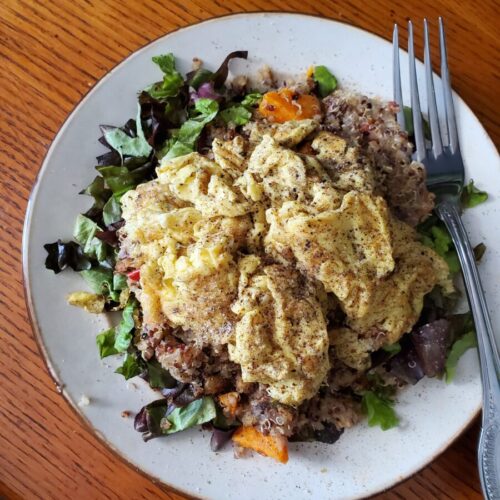
Scrambled Eggs
Equipment
- Skillet (preferably cast iron)
- Small Bowl
Ingredients
- 2-3 eggs per person
- 0-1 tsp. oil or butter of choice
- dash salt
- dash pepper
Instructions
- Preheat a skillet over medium-high heat.I use a cast iron pan to cook eggs and I have a new stove. So for me this is about a 6 on my stovetop. If you've already been using the pan or its preheated for longer than you anticipated, the cast iron may have heated more thoroughly and a 4 is likely adequate.If you're using a different type of pan, you're likely going to want a slightly lower temperature. Likewise, somewhere around a 4 is probably adequate.If your stove is older or heats at a different temperature, adjust accordingly. You want the pan to be hot enough to cook the eggs relatively quickly and I use a pretty high temperature here. But you're not deep frying the eggs! If sparks start frying, the heat is too high.
- If you like or need to, add oil at this point.If you're using a well-seasoned cast iron pan, you should only need a spritz of oil or the slightest amount of butter, if anything at all. The pan should naturally be non-stick and shouldn't require any grease. Although there is some personal preference here with flavor. Some people prefer it and I'll usually add a spritz of olive oil.For other types of pans, you may need upwards of a teaspoon of oil or butter to prevent sticking.I would always recommend using the least amount of oil or butter possible. Too much will make the eggs greasy. And again, we're not deep frying them! You want just enough oil or butter to keep the eggs from sticking.For most recipes I would recommend a high heat oil over olive oil or butter. Despite the fact that most of us have olive oil or butter lying around, they're not the best to cook with at higher temperatures because they burn easily. For eggs it doesn't matter that much, though. Since they cook so quickly, you can use whatever you prefer.
- Crack eggs into a bowl and whisk until fluffy.
- Add eggs to the skillet.
- Immediately move the eggs around gently with a spatula, making sure that they cook evenly.Stirring more constantly will result in runnier eggs.Stirring less vigorously will result in thicker eggs. Although, you may need to flip them to cook evenly. This will turn out more like a sheet of eggs than individually scrambled eggs. But you can get some nice browning when you do this without compromising the fluffiness of the egg.
- Continue to gently move the eggs around until barely cooked. This should take no more than a couple of minutes.
- Optionally add cheese about 60-90 seconds before the eggs are finished cooking.Just barely add the cheese when the egg is no longer runny, but hasn't quite solidified (see notes above on adding cheese).
- Remove eggs from the skillet when they begin to form and are no longer runny.Doneness is largely a personal preference. I prefer an egg that is just barely no longer runny. If you like a firmer or softer egg, though, adjust accordingly.
- Add salt, pepper, and any other seasoning of choice (see notes above on flavoring and seasoning).
- Serve immediately.Scrambled eggs are best served right off of the stove and don't reheat well. Reheating in the microwave or on the stove can overcook them and result in a rubbery consistency.
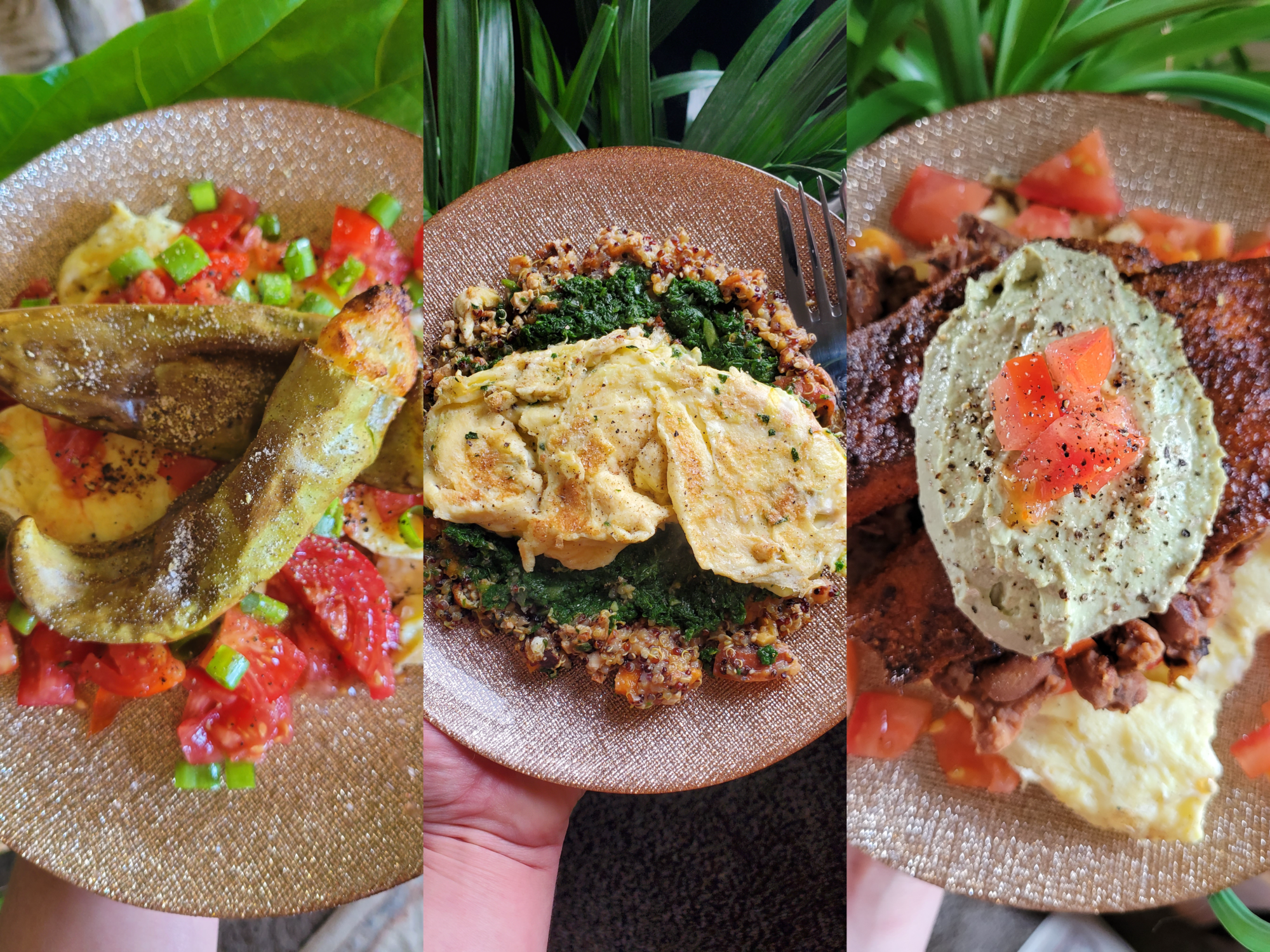
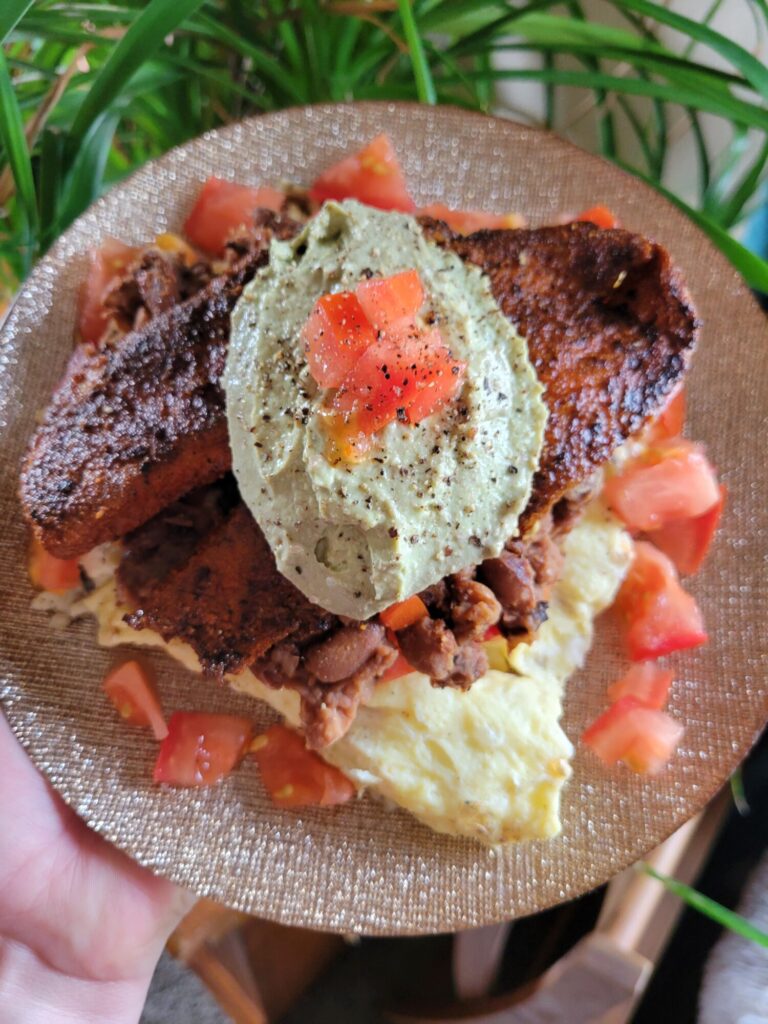
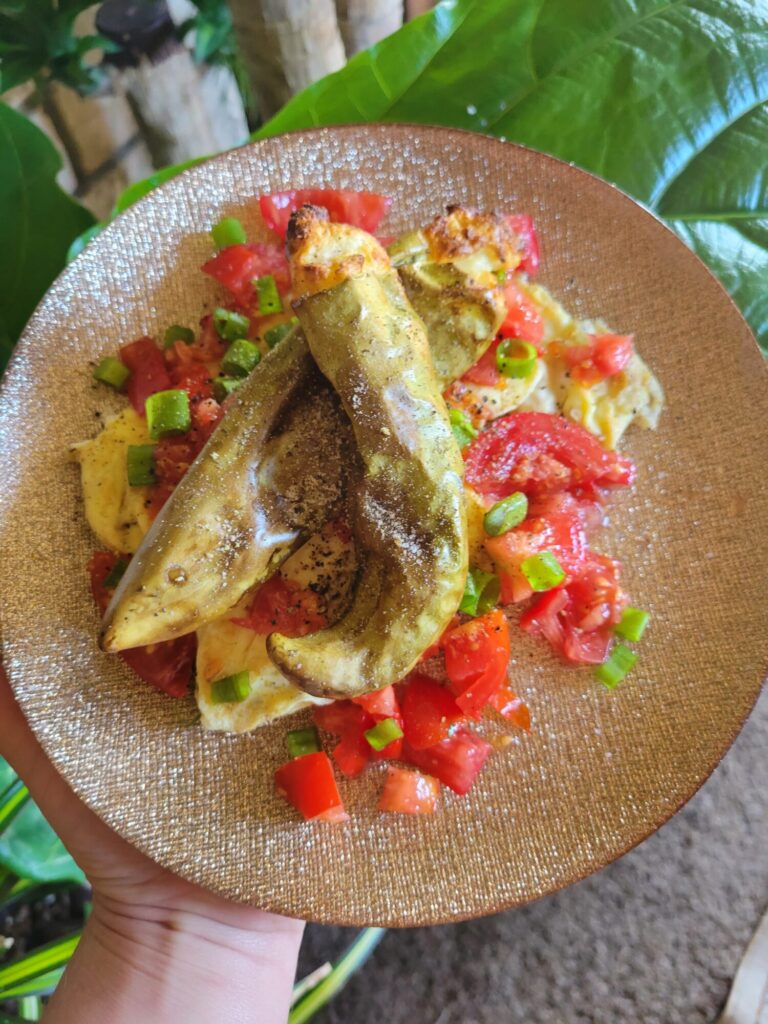
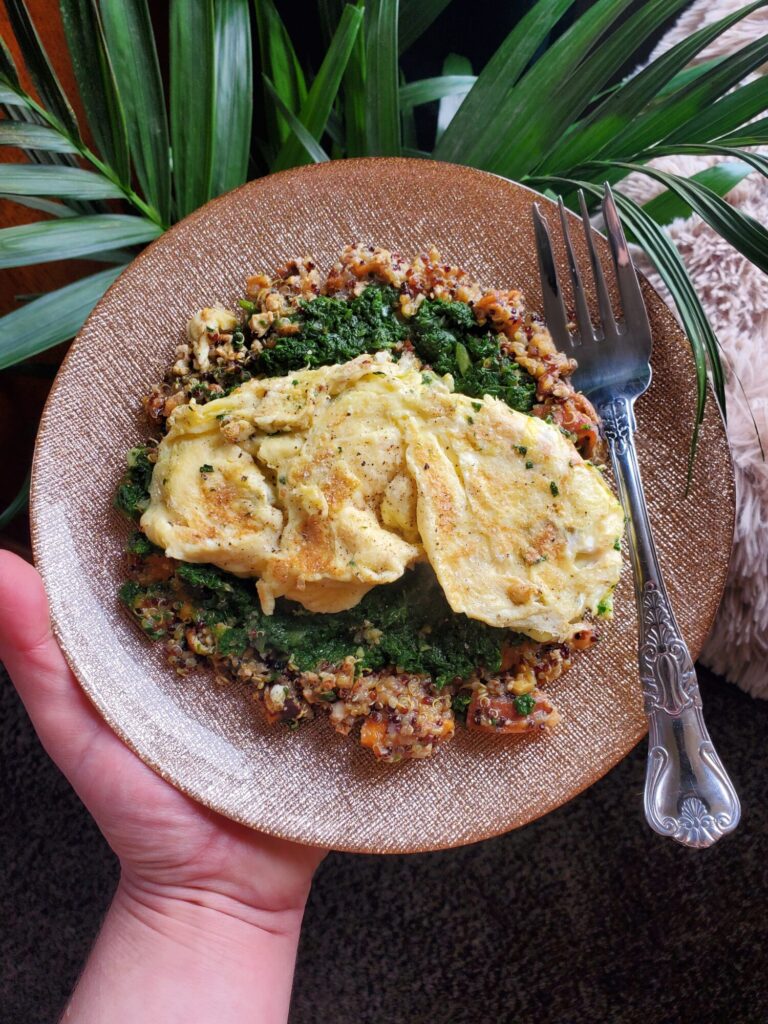
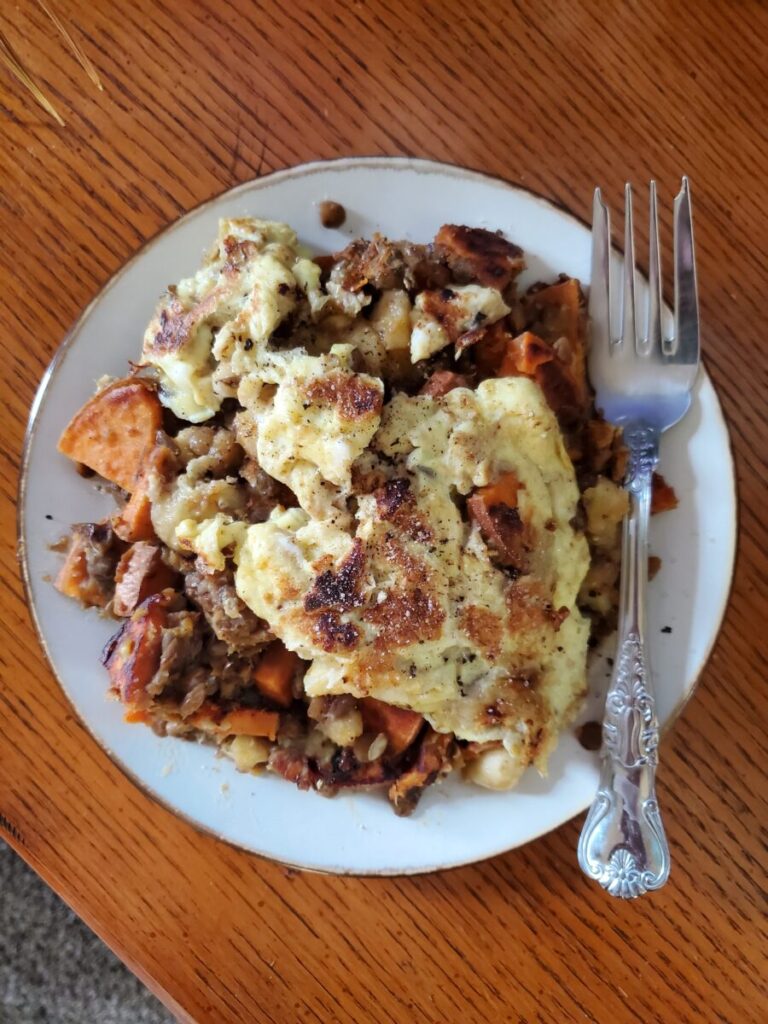
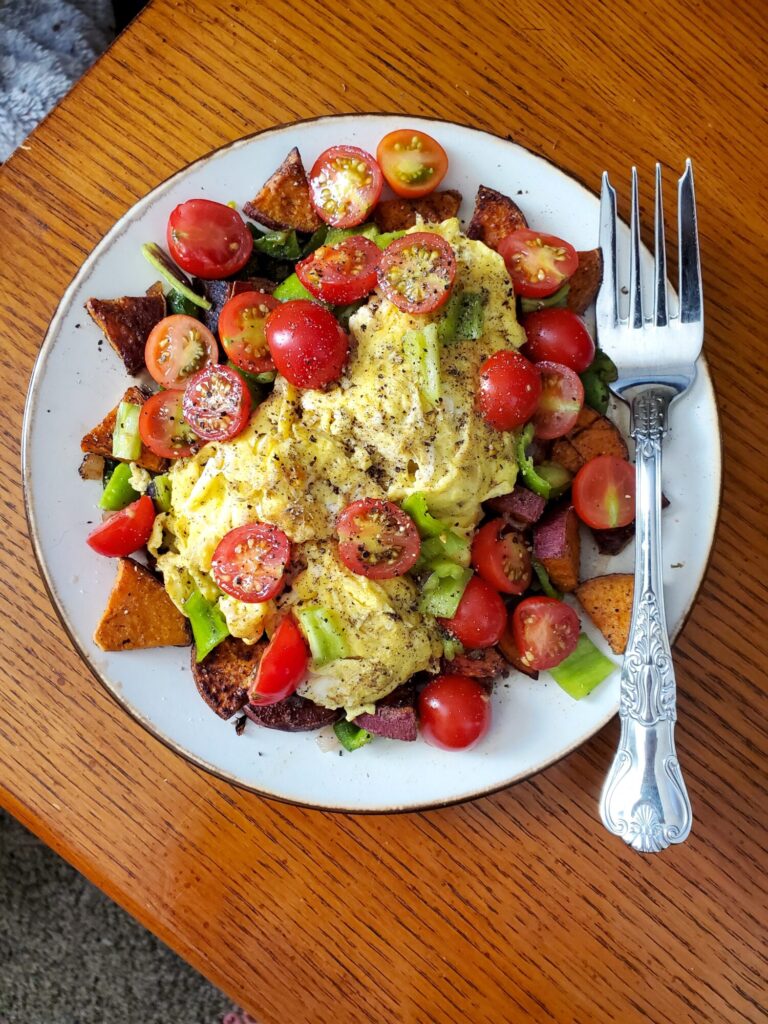
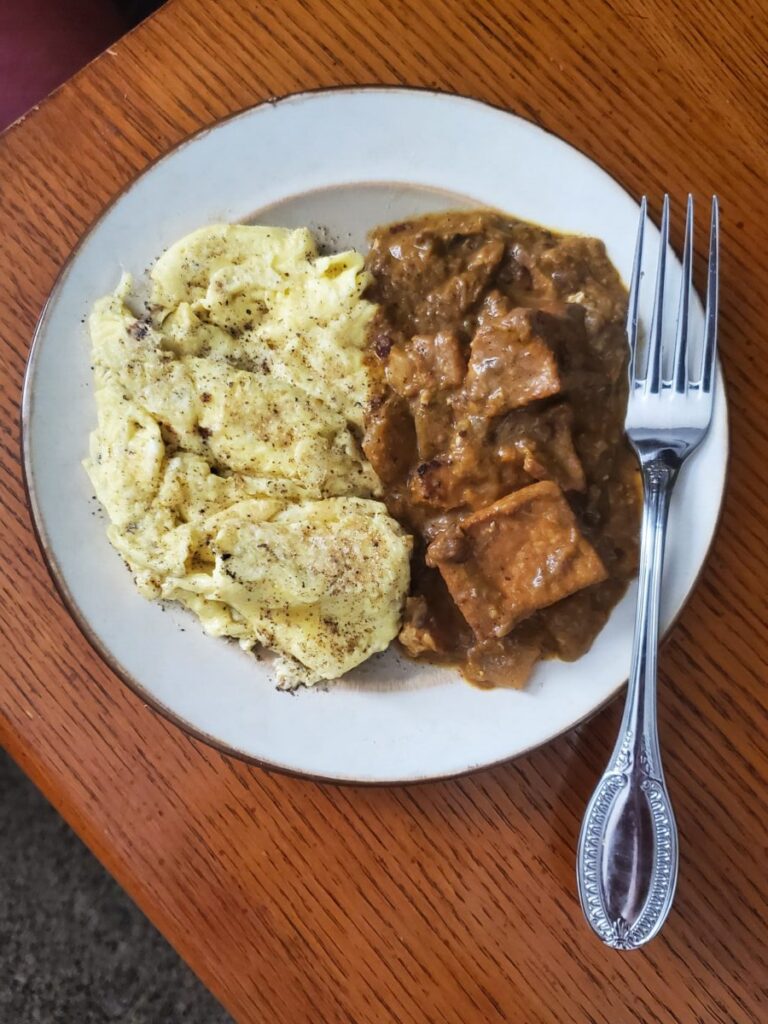
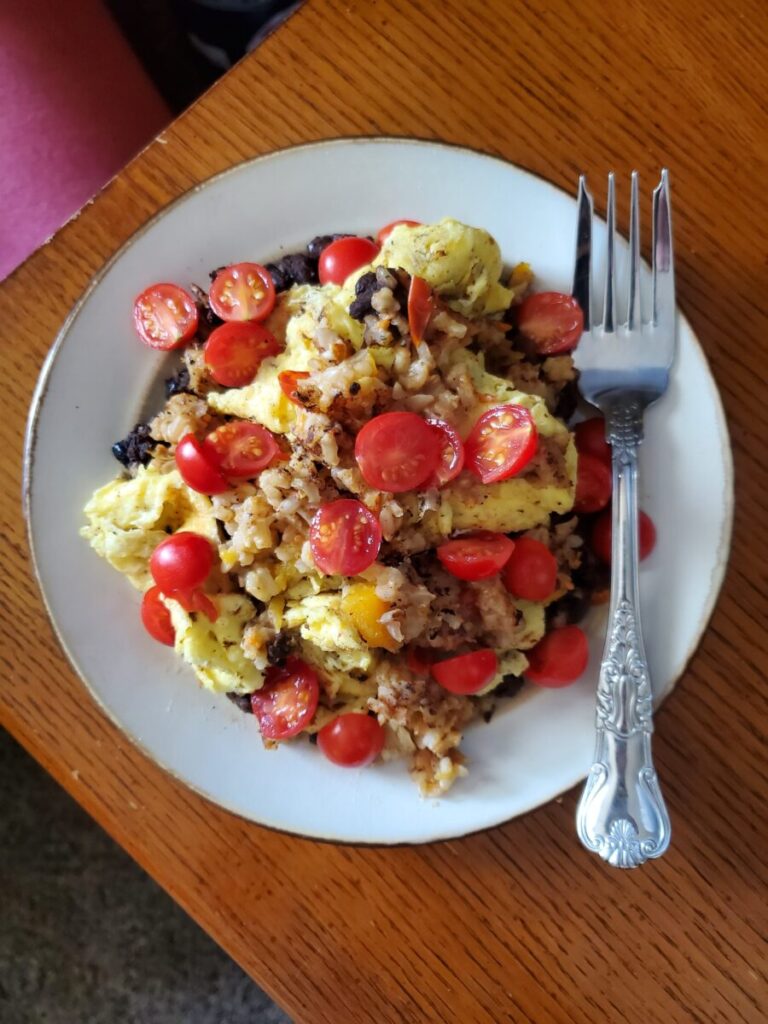
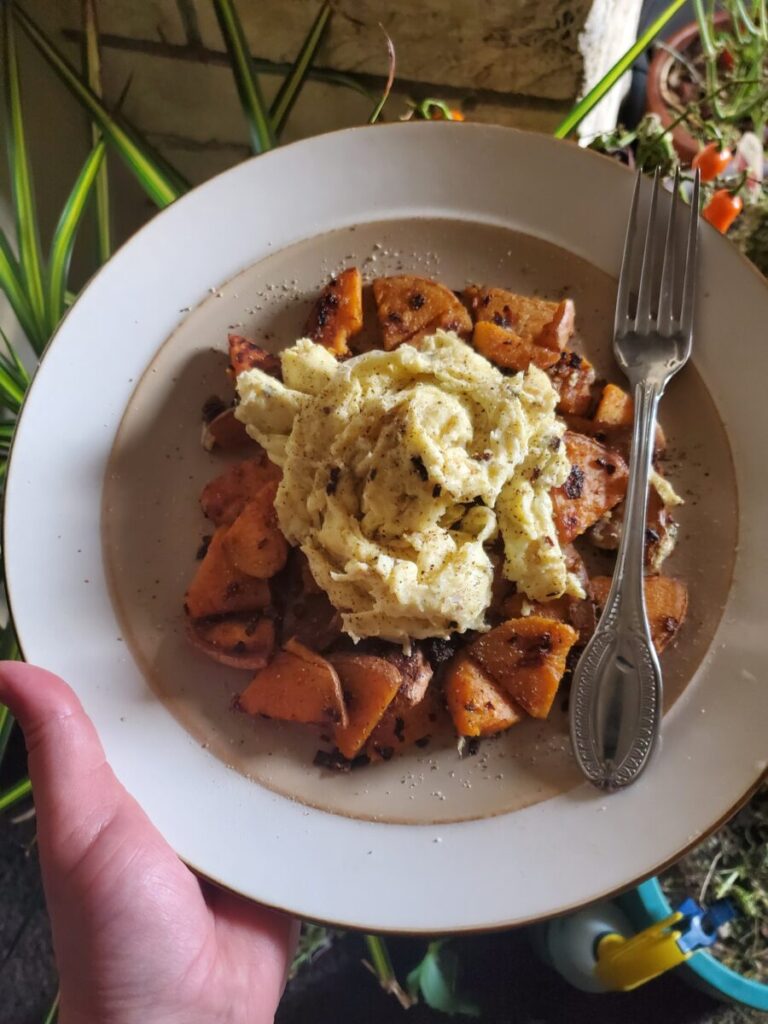
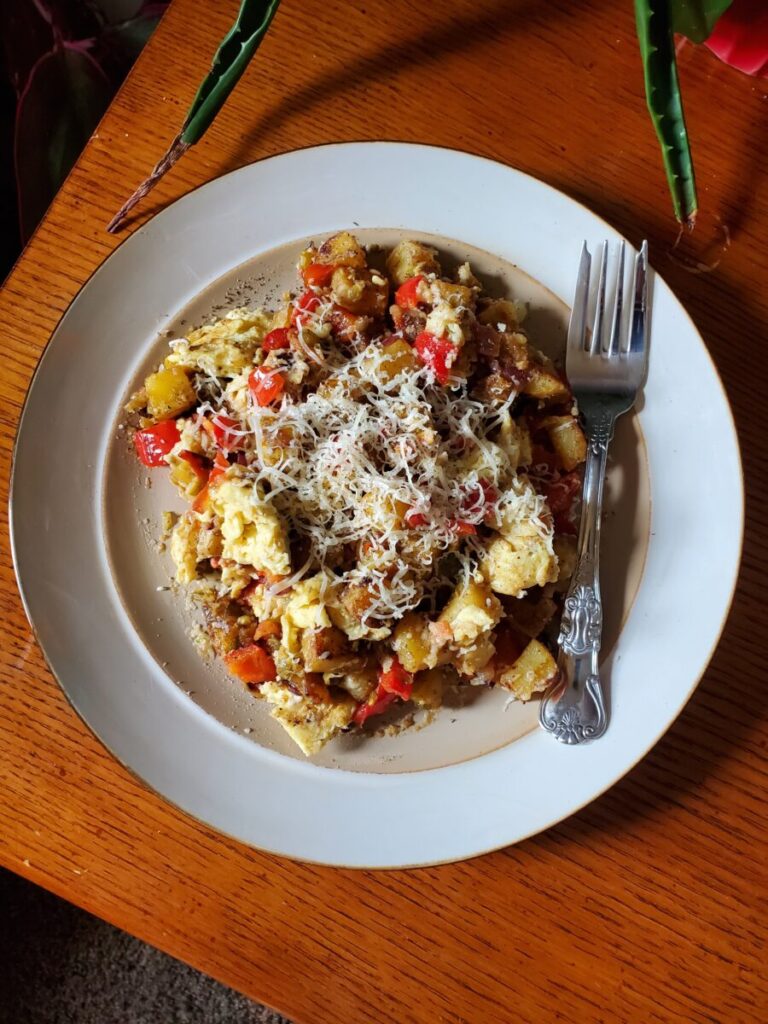
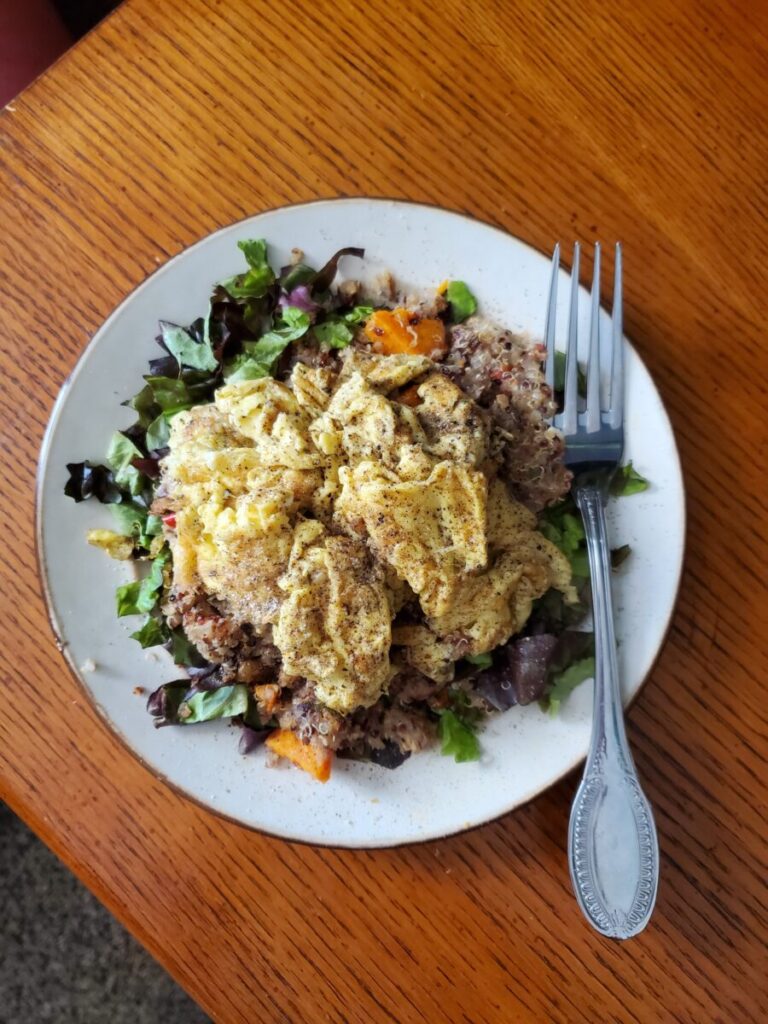
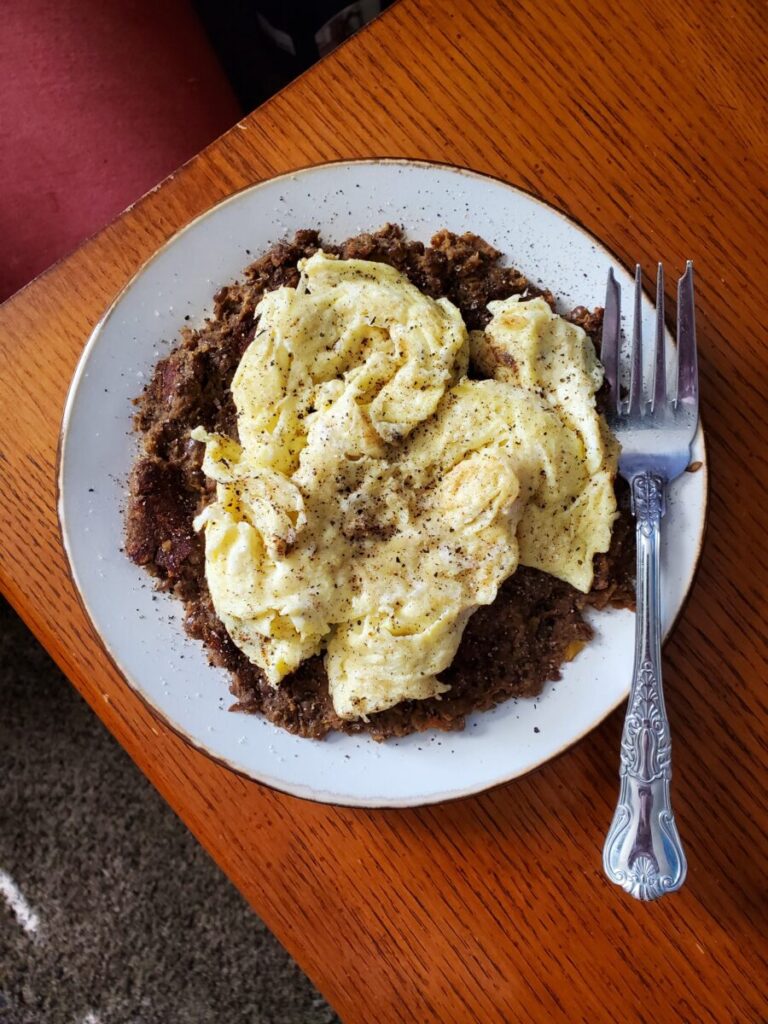
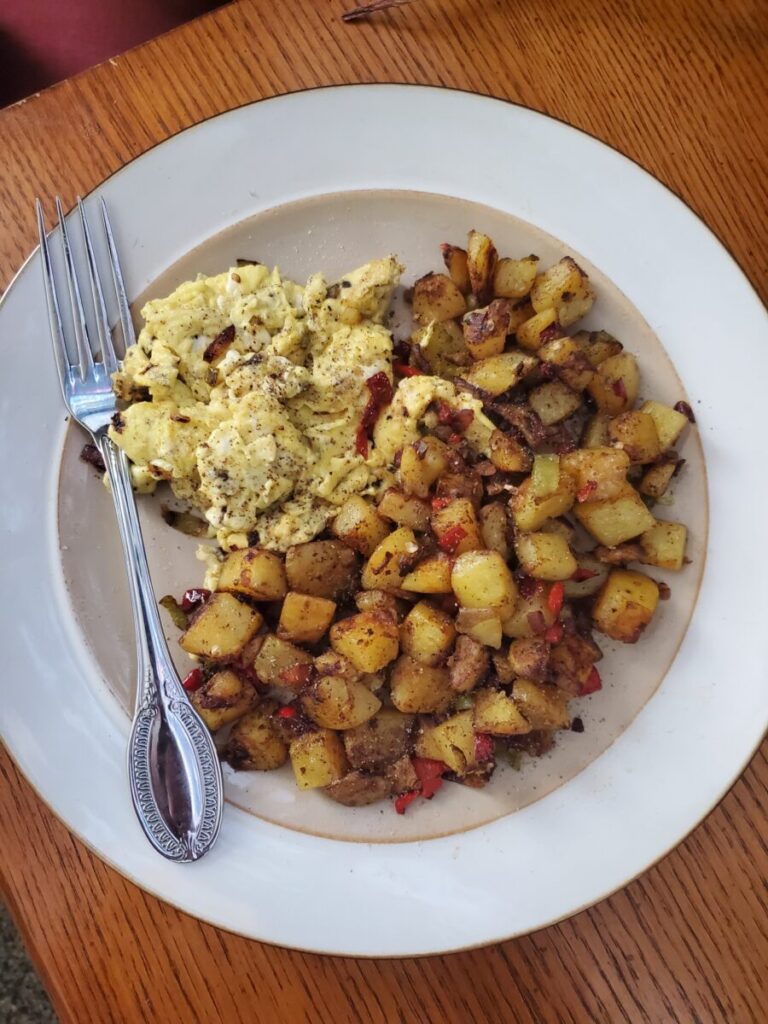








Leave a Reply